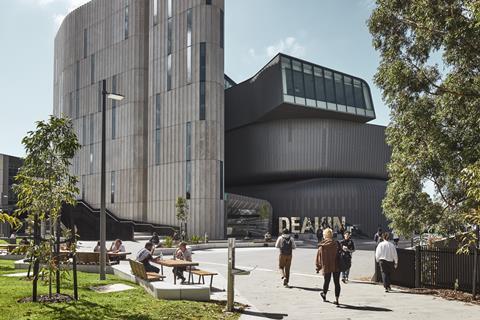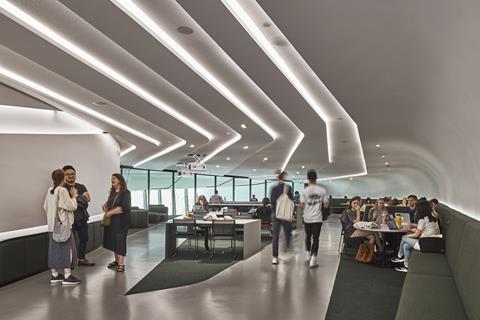From my perspective, it’s not necessarily about attracting women into architecture; it’s about retaining them,” says Sarah Ball, principal and Melbourne studio hub chair at Woods Bagot.
“The ratio is 50:50 out of university – but that drops off as you move towards the more senior roles within practices. That’s something we as an industry and a practice really have started focusing on.”

Ball, who lives in Melbourne, also leads Woods Bagot’s studios in Adelaide and Aukland, meaning she heads a team of around 150 people in total – and she says she is incredibly proud of the fact that her senior leadership team is 50% men and 50% women.
In fact, says Ball, this flows down through the various tiers of roles within the Melbourne studio hub. She believes some of the attrition rate in the industry as a whole has to do with having children and the way the sector functions.
Ball says it is imperative that more is done to make architecture attractive to women returning to work after maternity leave.
She says a portion of this is definitely down to increasing the flexibility available within roles.
>> Special report: Women in construction
Asked about her own path into the industry, Ball – who has been with Woods Bagot for 18 years – is frank in her response.
“Full disclosure: my dad is an architect, but I wouldn’t say he encouraged me into it. I would simply say I was well aware of it,” she explains. “It was also my art teacher who suggested it as route worth pursuing.”
Ball, who is also the practice’s lead for science and education, explains that she had always had dual passions which made architecture a wise choice: she loved both the creative and logical side, having studied not only art but also two types of maths and physics in her last year of school.
“Architecture makes you feel something, and it has to work, so it really combined those two sides of me,” she explains.
When considering how she has progressed to the role she now holds, Ball says it has been a combination of incredibly hard work and dedication along with being in the right place at the right time.
“When I joined Woods Bagot, they were looking to expand the business, to expand the shareholding, so I became a shareholder in the business at quite a young age,” she says.
Ball adds that becoming a leader within the business at a young age and maintaining the role and continuing to grow within it was one of her biggest career achievements.
But Ball says her greatest achievement is being a mum to her three-year-old son. She says it has taught her more about balancing priorities, as well as deepening her understanding of the world – making her consider the importance of the world we leave behind us.
She says the strongest endorsement she has for the sector is that she still loves it every day. So, what would her advice be for women considering architecture as a career?
“Do it; just do it. It’s a challenging industry – but it’s an incredible industry,” she says. “We clearly make up 50% of the population, so it’s important we are involved in crafting the built environment in which we all work. It’s something you must love and want to do.”
Ball says it is also important to make sure you have a voice and use it, and that you are willing to advocate for yourself and find the people who are willing to support and advocate for you.
“There’s no limits as to where it can take you,” she concludes. “We need people who care about the quality of the built environment.”
Inside Deakin University’s Law Building
One of the project’s Ball is most proud of is the Deakin Law Building in Melbourne. The largest teaching facility on the campus, she says it is a prime example of why she is passionate about the education and science sectors.






























No comments yet